Verruculina enalia (Kohlm.) Kohlm. & Volkm.-Kohlm., Mycol. Res. 94: 689 (1990). Fig. 154
≡ Didymosphaeria enalia Kohlm., Ber. dt. bot. Ges. 79: 28 (1966).
MycoBank number: MB 128209; Index Fungorum number: IF 128209; Facesoffungi number: FoF 05281.
Saprobic on wood in mangrove habitats. Sexual morph: Ascomata 200–470 µm high, 120– 400 µm diam., (x̅ = 318 × 250 µm, n = 10) subglobose, ampulliform or depressed ellipsoidal, black, carbonaceous, partly or completely immersed, clypeate, solitary, ostiolate, papillate. Ostioles 60– 130 µm long, 40–80 µm diam (x̅ = 90 × 65 µm, n = 5), periphysate. Peridium 12–50 µm thick, one- stratum, composed of about six or more layers of irregular roundish or elongate, thick-walled cells of textura angularis. Hamathecium comprising 1.5–2 µm diam., septate, rarely branched pseudoparaphyses. Asci 110–130 × 8–12.5 µm (x̅ = 119 × 9.5 µm, n = 10), thick-walled, bitunicate, 8-spored, cylindrical, persistent, pedicellate, fissitunicate, with a faint apical apparatus. Ascospores 17.5–20 × 8–10 µm (x̅ = 19 × 9 µm, n = 50), 2-seriate, ellipsoidal, dark-brown, 1-septate, constricted at the septum, verrucose to verruculose, sometimes with a distinct small, hyaline tubercle at each apex, probably a germ pore. Asexual morph: Undetermined.
Culture characteristics – Ascospores germinating on 2 % sea water agar within 24 h with germ tubes produced from terminal ends. Colonies on malt extract sea water agar fast growing, gray to pale brown, brown at margins, reverse brown, filamentous, lobate, reaching 20 to 40 mm in diameter in 25 days at room temperature.
Material examined – India, Tamil Nadu, Tiruvarur, Muthupet mangroves (11.24°N 79.5°E), on decaying wood of Avicennia marina (Acanthaceae), 28 April 2015, B. Devadatha, AMH-9993, living culture NFCCI-4422.
GenBank numbers – ITS:MK028711, LSU: MK026758, rpb-2 = MN532684, SSU = MK026759, tef1 = MN532687.
Notes – Verruculina enalia shares similar characters with other genera of the family but is distinct in having papillate ascomata and ascospores that are verrucose or verruculose (Suetrong et al. 2009). Verruculina enalia was first described as Didymosphaeria enalia, later Barr (1990a) assigned it to Lokjania. It was transferred to Verruculina by Kohlmeyer & Volkmann-Kohlmeyer (1990). Further molecular studies resulted in its placement under Testudinaceae (Suetrong et al. 2009). It is a core mangrove species, frequently reported from decaying mangrove wood and exclusively occurs in marine environments while other genera in the Testudinaceae are from terrestrial or freshwater habitats. Phylogenetic analysis (Fig. 42) and morphological characters (Fig. 154) indicate that our strain (NFCCI-4422) is identical to Verruculina enalia.
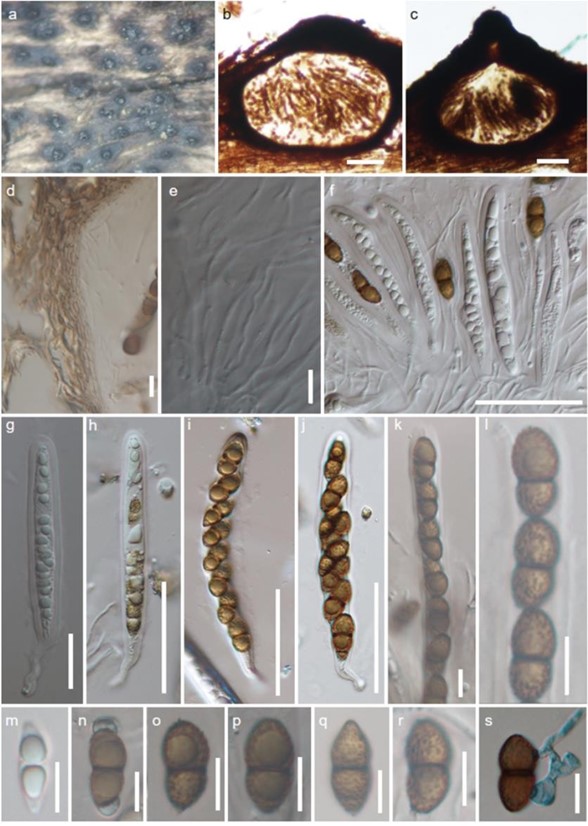
Figure 154 – Verrculilna enalia (AMH-9993). a, b Ascomata erumpent on Avicennia marina. b−c Longitudinal section of ascomata. d Section through peridium. e Pseudoparaphyses. f−k Immature and mature asci. l Verrucose to verruculose ascospores with ornamentation. m−r Immature hyaline and mature brown to dark brown ascospores. s Germinating ascospore stain in cotton blue. Scale bars: b, c = 100 μm, f, h−k = 50 μm. d, e, m−s = 10 μm.

Figure 42 – Phylogram generated from maximum likelihood analysis (RAxML) of Pleosporales based on ITS, LSU, rpb-2, SSU and tef1 sequence data. Maximum likelihood bootstrap values equal or above 70 % are given at the nodes. An original isolate number is noted after the species name. The tree is rooted to Capnodium coffeae (CBS 147.52). The ex-type strains are indicated in bold.

Figure 42 – Continued.
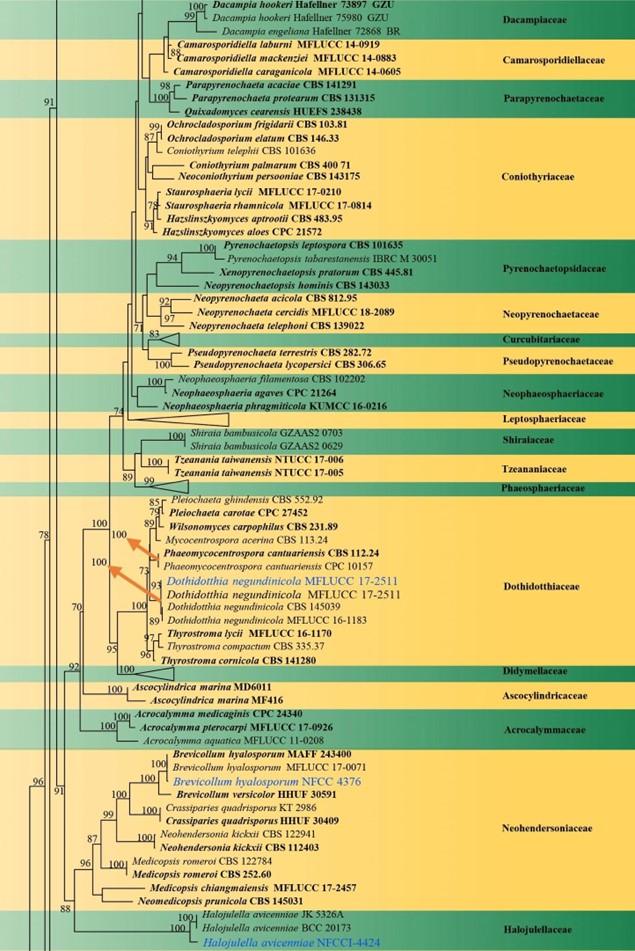
Figure 42 – Continued.
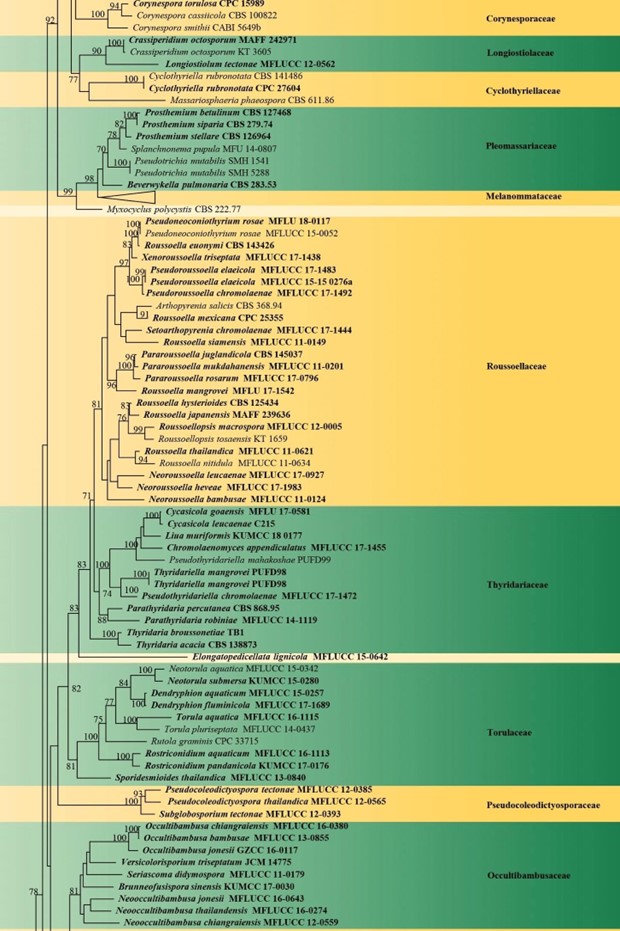
Figure 42 – Continued.
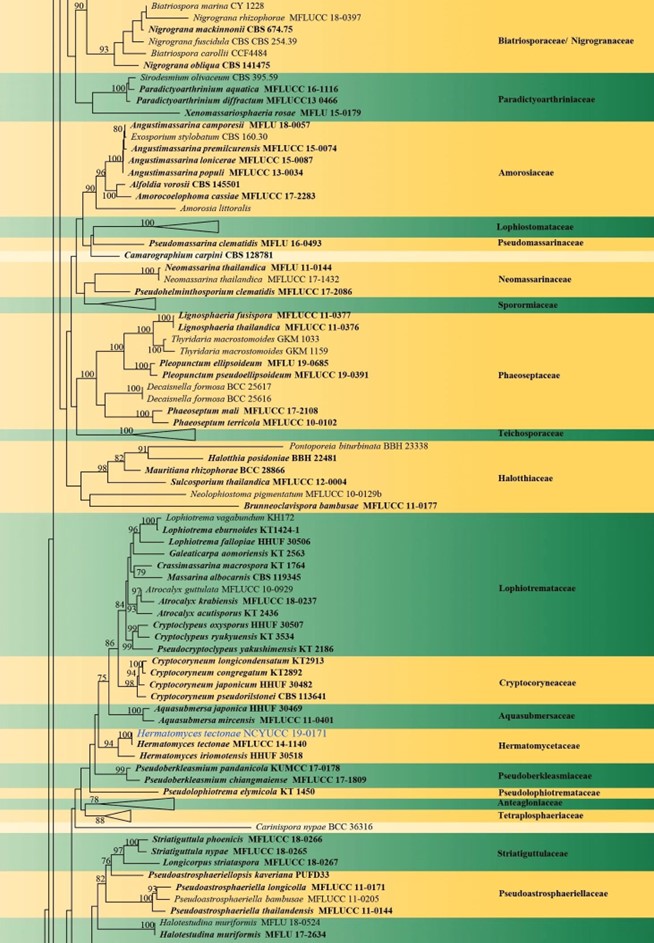
Figure 42 – Continued.
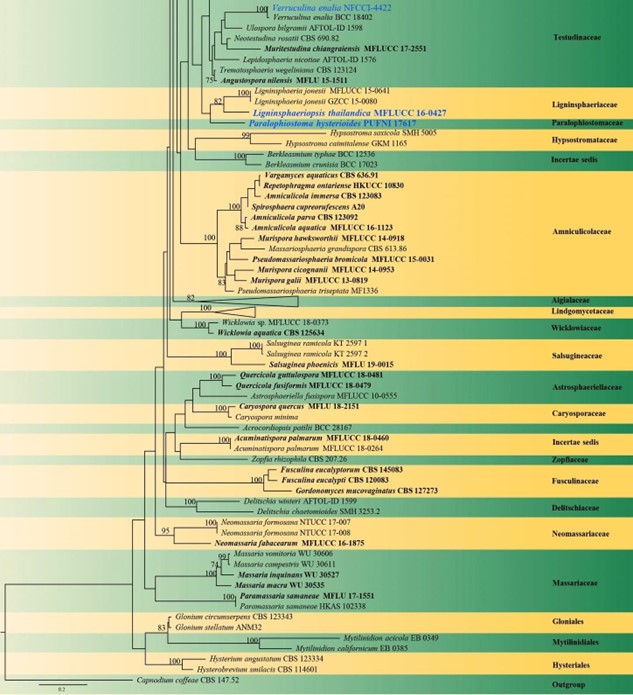
Figure 42 – Continued.
